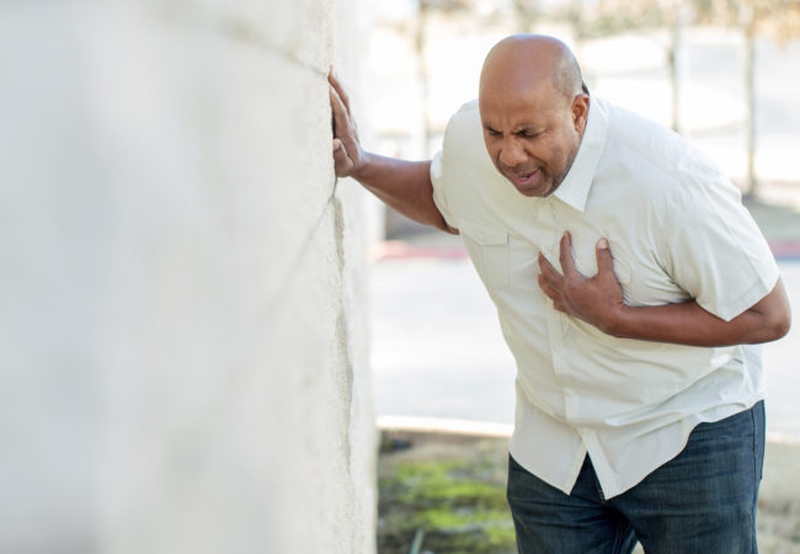Heart disease is the leading cause of death for both men and women. About 735,000 people in the U.S. have a heart attack each year, and 525,000 are first-time heart attacks, according to the Centers for Disease Control and Prevention. Nearly 47 percent of heart attack deaths happen not in a hospital, meaning the person likely ignored some symptoms. Therefore, being able to recognize the early signs of a heart attack is important in keeping yourself alive, as well as saving someone else’s life.

Did I Have a Heart Attack?
Classic Symptoms
Chest pain/discomfort: One of the most common heart attack symptoms is chest pain. This usually feels like someone is sitting on your chest or squeezing your chest, and even though you may think it’s heartburn, antacids won’t help. This chest pain typically lasts for more than a minute and can happen when you’re being active or at rest. Even so, a study in the Journal of the American Medical Association found that 31 percent of men and 42 percent of women did not have any chest pain with their heart attack.
Nausea or indigestion: If you have any feelings of nausea or indigestion without any other symptoms of stomach flu or heartburn, this could be a sign of an impending heart attack. Women are more likely to have this as a heart attack symptom, and they should check it out, instead of asking themselves "did I have a heart attack?" if they have this symptom without explanation.
Pain that spreads to arm: Another symptom that is more common in women, the chest pain can spread down the arm. This is because the heart attack is blocking blood flow and restricting oxygenated blood from reaching the muscles. If the arm pain happens without serious chest pain, a person may blow it off and not associate it with a heart attack.
Feeling dizzy: If you feel chest pain along with the feeling like you might pass out, it may be time to make a visit to your doctor. It could be a sign that your blood pressure is dropping because your heart isn’t pumping blood properly.
Shortness of breath: It’s possible that this may be the only symptom of a heart attack you have, or it could coincide with chest pain. The inability to catch your breath could happen while you’re active or at rest. This is because blood is getting backed up in the lungs because your heart isn’t pumping properly. Fluid then leaks into your lungs, making it difficult to breathe.
Atypical Symptoms
Throat or jaw pain: While more often this is the result of a cold or tooth problem, pain in your throat or jaw can also be a heart attack symptom. If you have chest pain that is spreading up into your throat or jaw, you should seek medical attention.
Sweating: Sweating that can’t be explained by exercise or other exertion could be a heart attack symptom. It may be a cold sweat that can’t be attributed to anything.
Persistent cough: If you have a cough that won’t go away and isn’t from a cold or flu or other respiratory diseases, it may actually be from a heart attack. If the cough is accompanied by pink mucus, it could be because your heart isn’t functioning properly and blood is leaking into your lungs.
Weakness: If you suddenly feel less energy or can’t exert yourself like usual, this could be a reason to ask yourself "did I have a heart attack". If the unexplained weakness is also accompanied by fatigue and tiredness for no reason, then you should definitely consult your doctor.
How to Diagnose Heart Attack
If you have any of the symptoms mentioned above, you should seek medical attention right away. Your primary care doctor or an emergency room doctor will run a series of tests to figure out whether or not you are having a heart attack. This might include:
Electrocardiogram: This is an easy test that measures the electrical activity of the heart. It shows how quickly your heart beat is and if the rhythm is steady or irregular. It can show if there’s heart damage or if a heart attack is going on.
Coronary angiography: This is a test that helps find blockages in your arteries. A doctor will place a catheter (a thin tube) into your a blood vessel in your arm or groin and thread it into your coronary arteries. Dye is then released into your bloodstream, and your doctor can see on an x-ray how your blood is flowing and where any blockages may be. If there is a blockage that can be fixed, the doctor will inflate a balloon within the artery to break up the blockage. Sometimes a tube called a stent is also inserted to prevent a future blockage.
Blood tests: When you’re having a heart attack, the cells of your heart muscle start dying and release proteins into your bloodstream. Your doctor can order blood tests to measure the level of these proteins. They are often repeated to see if the protein levels are changing.
Then you will get a clear answer to the question "did I have a heart attack" and your doctor will take the next step accordingly. You may want to watch the video below to know how heart attack will be treated.
View All Comments /Add Comment